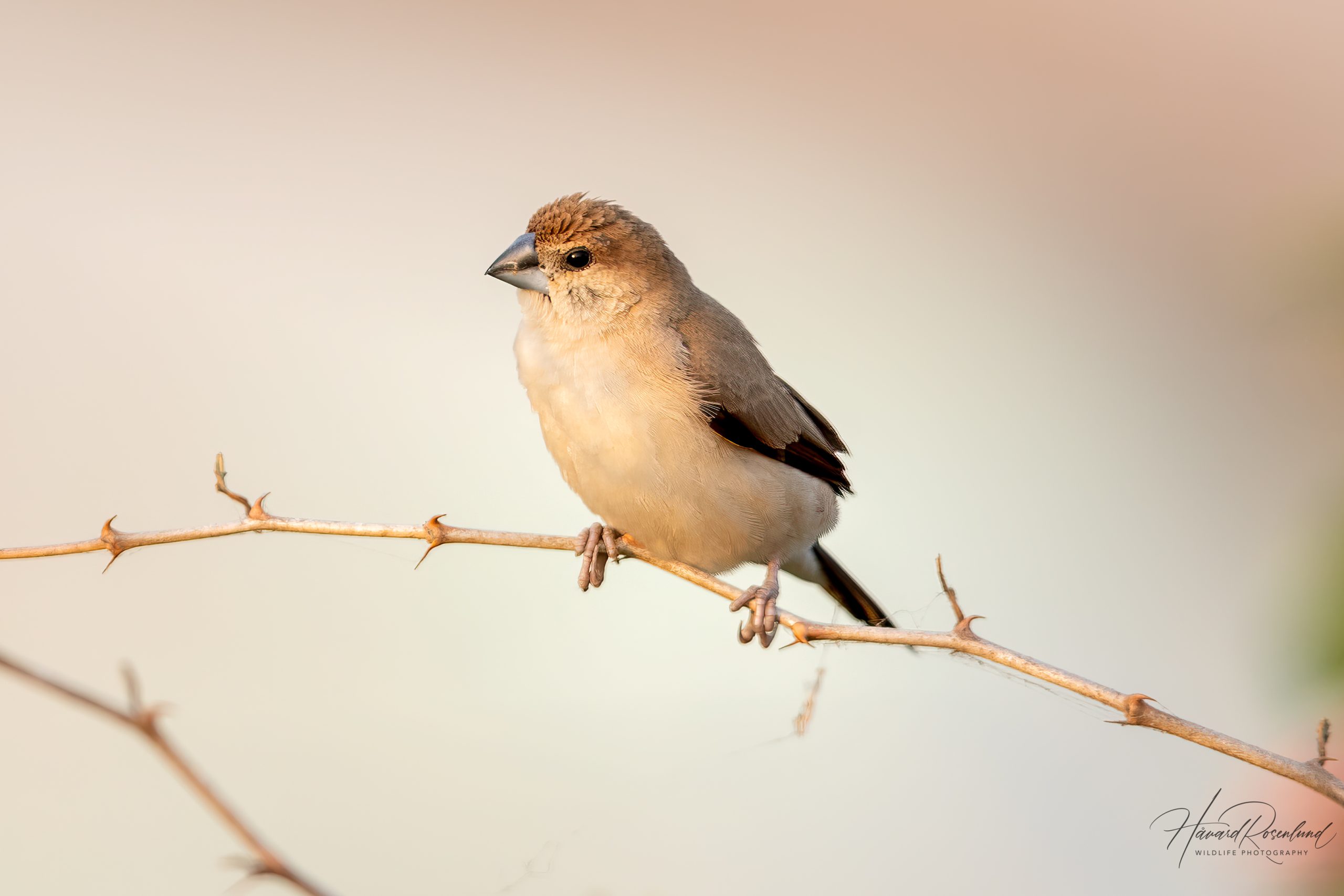Indian Silverbill
(Euodice malabarica)
Description
The Indian silverbill (Euodice malabarica), also known as the white-throated munia, is a small passerine bird native to the Indian subcontinent and parts of the Middle East. Measuring about 11 cm (4 in) in length, this bird has a distinctive stout, silver-grey bill, which contrasts with its brown upperparts and white underparts. The flanks and rump exhibit a subtle buff color, adding to its muted yet elegant appearance. One of the key identifying features is its short tail, which is edged with white. It is commonly found in flocks, moving with quick, darting flights, and is often seen perched on low shrubs or grasses.
Diet & habitat
The Indian silverbill inhabits dry open country, often near water sources. It can be found in grasslands, scrublands, agricultural fields, and even urban gardens. The Indian silverbill is highly adaptable and can thrive in a range of environments, from arid regions to semi-urban landscapes, where it often flocks with other small seed-eating birds.
This species is predominantly granivorous, feeding on a variety of seeds, particularly those of grasses. Its small, strong bill is well-adapted to cracking open the tough outer shells of these seeds. The bird often forages on the ground, hopping through grasses and low shrubs, searching for food. It may also feed on small insects, especially during the breeding season when the demand for protein increases.
Nesting
The breeding season of the Indian silverbill varies depending on its geographical location. In India, breeding can take place throughout the year, but with peaks near the onset of rains. The species is known for its communal nesting habits, often building nests in close proximity to others. The nest is a large, untidy ball of grass, lined with feathers, and typically placed in a bush, tree, or even in human-made structures.
The female lays 4-6 white eggs, which are incubated by both parents for about 12-14 days. After hatching, both parents continue to feed the chicks, which fledge after around 21 days. Occasionally there seems to be additional birds that help raise the young, as more than just the parents have been seen partaking in raising the young in some instances.
Introduced populations
The Indian silverbill has been introduced to several regions outside its native range, including certain parts of the United States, particularly in Hawaii, as well as parts of the Middle East, particularly in countries like Saudi Arabia and the United Arab Emirates, even though there is uncertainty whether some of these populations are native or not. These introductions have often occurred due to the bird’s popularity in the pet trade, where escaped or released individuals have established wild populations.
In the regions where it has been introduced, the Indian silverbill can have varying impacts on the local ecosystems. In some cases, it competes with native seed-eating birds, potentially altering local biodiversity. However, in most of its introduced range, it does not seem to have caused significant ecological disruption.
Status
The Indian silverbill is listed as least concern on the IUCN Red List, reflecting its wide distribution and stable population trends. However, in some areas, its populations are threatened by habitat loss due to agricultural expansion and urbanization. Despite this, the species’ adaptability to different environments has allowed it to remain widespread and relatively common.





